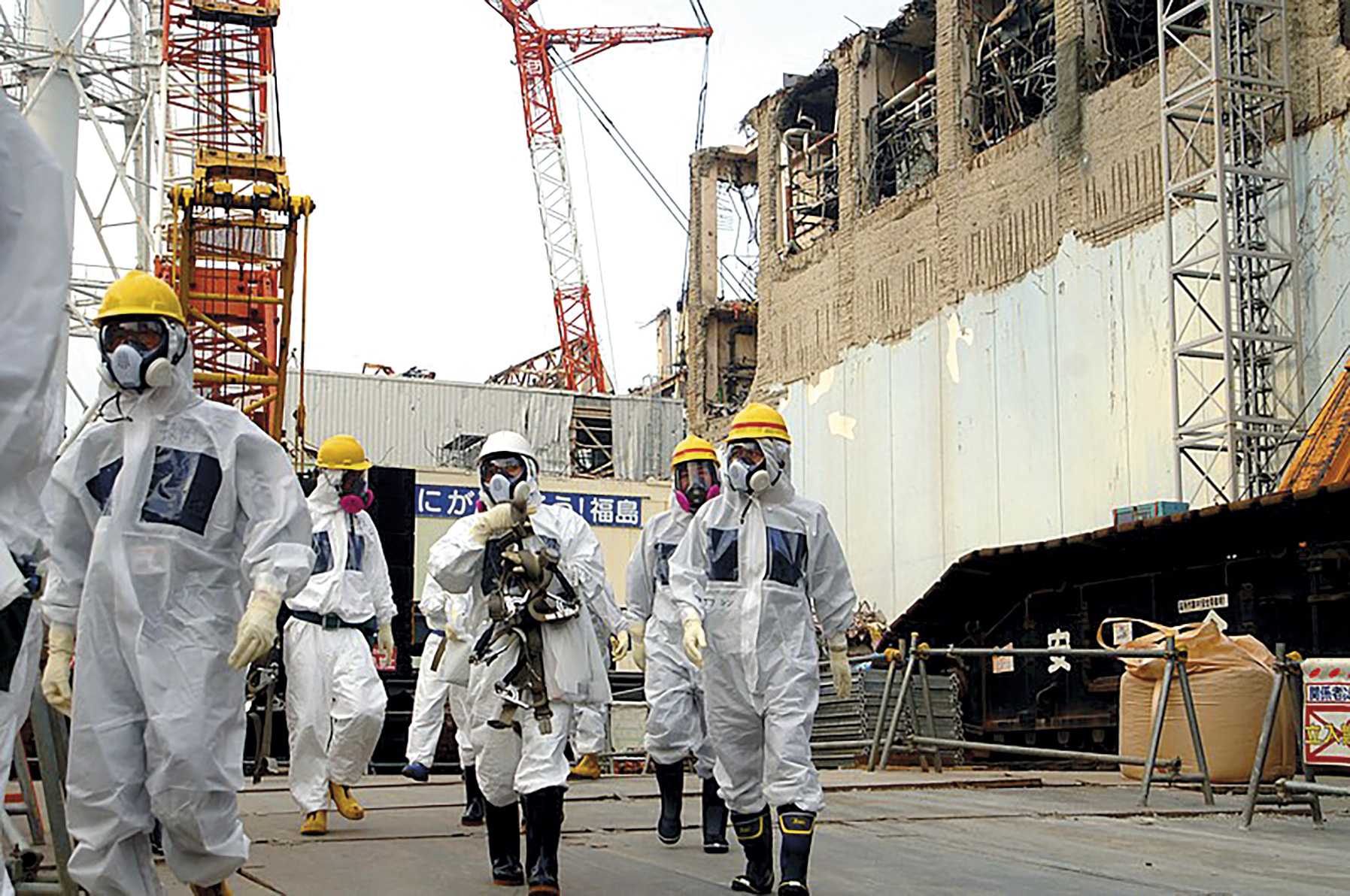Fukushima: past accident, severe damage and solutions yet to be discovered
- Inevitably, on 24 August, the waters of the Fukushima power plant have begun to be thrown into the sea, as 97 per cent of the contaminated water tanks are full and water is added without cutting, with 140 tonnes per day. Despite being "decontaminated" water, the population remains concerned about the mistrust of the company that owns the plant, Tepco. But, in addition to water, they suffer a huge head drain with contaminated land and radioactive sludge, as well as with 880 tonnes of spent nuclear fuel inside reactors.

Given the impossibility of disposing of the chaotic consequences of the nuclear accident of 11 March 2011 and the increase in extreme weather events, the Japanese Government is starting to restart the plants: Of the 33 reactors, eleven operate in total in six plants. The latter, launched on 28 July, does not trust in its 48 years. Despite its age, the Japanese Parliament voted in May in favour of extending the survival of reactors from 40 to 60 years. We therefore firmly believe that it is "security". And it doesn't matter if Fukushima is on the seashore. A month later, the polluted waters of Fukushima begin to flow into the sea.
A thousand cisterns accumulate 1.39 million cubic meters of contaminated water. In 2011, tons of water was released in order to control the accident, and they are still in it, in order to keep reactors at a low temperature. They currently have 3% of the tank space and 140 tonnes of contaminated water are added per day.
So, baked by the needle of time and annoying, the waters begin to be thrown into the sea on August 24. On 4 July the International Atomic Energy Agency IAEA approved the step, being "compatible with international security measures" and with "irrelevant radiological effects for people or the environment".
The citizens do not own the plant in the words of Tepco and make the discrepancy heard. It includes fishermen. A hundred have filed a complaint against the Japanese State. The countries of the area are also concerned and China and Hong Kong have stopped imports of marine benefits, which has led to serious economic consequences for fishermen, who account for 42 per cent of the exports of the sector. Taiwan and South Korea are also opposed.
In 2022, the ruling came out: Fine of EUR 100,000 million for the four responsible for Tepco. “For breaching safety standards and their responsibilities”
The waters of the plant have been officially decontaminated, with the exception of two elements: tritium and carbon 14. Tritium can be dangerous if it is found in high quantities, but DMA assures that, in the case of Fukushima waters, it has been diluted in more water, as an acceptable radioactivity rate (1,500 becquerel per litre, 40 times lower than internationally permitted). Following the definition of the Reporterre media, the Alps Advanced Liquid Processing System (Advanced Liquid Processing System) technique has been used to remove 62 of the 64 radioactive components. However, let us remember that, as the independent blog l’ACROnique de Fukushima, which closely follows the plant since the accident, at first Tepco thought to dilute the contaminated water in more water without any decontamination.
At the moment 35% of the accumulated water is decontaminated. The process should last until 2050 with a maximum boarding permit of 500,000 litres per day. On this first occasion some IAEA members have exercised control, but will they always be there? Will they be present for 30 years? Let us hope that the past of Tepco will also be completed with lies and falsified documents. Who would realize if the decontaminated water would be added? EEA worker who is doing strict control anyway, if not, nobody.
Lies and false documents
In 2002 it was found, for example, that 29 inspections carried out in 13 of the 17 areas of the company since 1977 resulted in corruption in order to keep the fissure or errors found in reactors secret. In the case of the Fukushima accident, the sentence came out in 2022: Fine of EUR 100,000 million for the four responsible for Tepco. "They did not comply with safety standards and their responsibilities." In this respect, it is understandable that the mouth of the decontaminated waters should give rise to concern and mistrust.
.jpg)
At Fukushima Daiichi, decommissioning the nuclear plant is far more challenging than water release ("Fukushima Daiichin, the disaffectation of the nuclear power plant is much more difficult than the discharge of water"), the AP report tells us that in addition to witnessing this water, there are other headaches. On the one hand, the management of 880 tons of molten nuclear fuel in reactors, whose spokesman, Kenichi Takahara, has warned that they may become more. The mortal component is as present as robots. The process has a lot to do with it, because the complex method has not yet found it. Tests will begin at the end of the year. But Tepco’s director, Junichi Matsumoto, has acknowledged that measures to reduce the risks of exposure of workers’ radiation will become increasingly "difficult." The cleaning period has been set for 2051, but several experts say that a longer period will be needed, adding that it can be a century’s work.
Central mud and central environment
And what do we do with the radioactive components scattered through rainwater? We are mentioned, but if we start looking for data, we have frightening numbers. Among others, those of the Ministry of the Environment, which since the accident carried out analyses in the reservoirs near the plant. Every month, he drinks water in 73 dams in Tokyo, Iwate and seven other prefectures. Among them are ten in Fukushima Prefecture, where the soils measured between 2011 and 2015 exceeded the acceptable concentration level of average cessions: In the Ganbe reservoir, 64,439 becquerel per kilo of cesium, in Yokawa 27,533 becquerel and in Mano presa 26,859 becquerel. But since surface water did not have large transfers, less than 10 becquerel, the government decided to leave it without moving too much. The radioactive component is submerged, water that the inhabitants of the area drink, animals and plants. In addition to reservoirs, there are radioactive signs throughout the course of water, whether in rivers, streams or underground courses.
22 million cubic metres of land deposited in a protected area have been contaminated, where they also face the problem of space shortage
Nor can they manage the powders of incinerators specifically destined for the wastes affected by the accident: to count a government with 52,000 tonnes of radioactive powder in the six months following the accident. The journalist has not found up-to-date data, but at twelve years of the accident we have no difficulty imagining an astronomical amount.
One last point of concern: The pollution of 22 million cubic metres of land accumulated in protected areas has become a problem of scarcity of space, as the Ceains-137 takes long decades to dismantle and continues to expand. Among other things, because 70% of the province of Fukushima is a forest in which they have not been able to dig. That is where it is and continues to spread with rainwater or soil erosion.
To transform the unacceptable into acceptable or ingestible, they soon changed the reference, from 100 Bq/kg to 8,000 Bq/kg immediately after the accident. As there is no solution, the waters "decontaminated" to the sea and the lands "little contaminated" to "recycling": mixed with materials for the construction of roads, dykes or other infrastructures, reduce the accumulated radioactive load...
The Fukushima nuclear power plant exploded on 11 March 2011. The images that were broadcast on television perpetuated the moment of the explosion and the subsequent white cloud in the sky. In the news of the coming days and months Fukushima had special relevance, but the speed... [+]

























